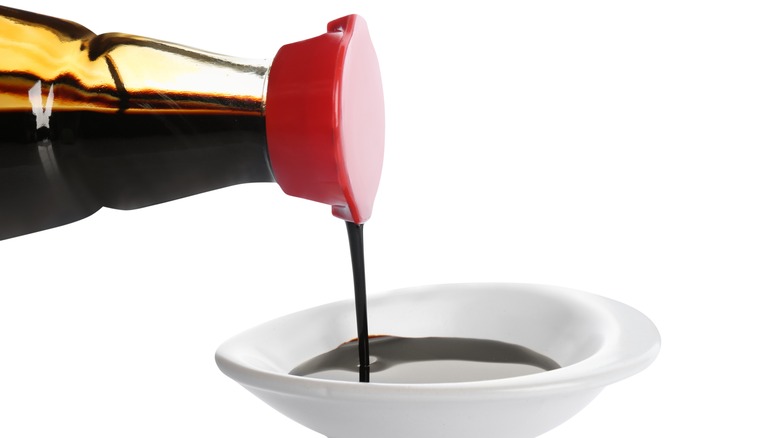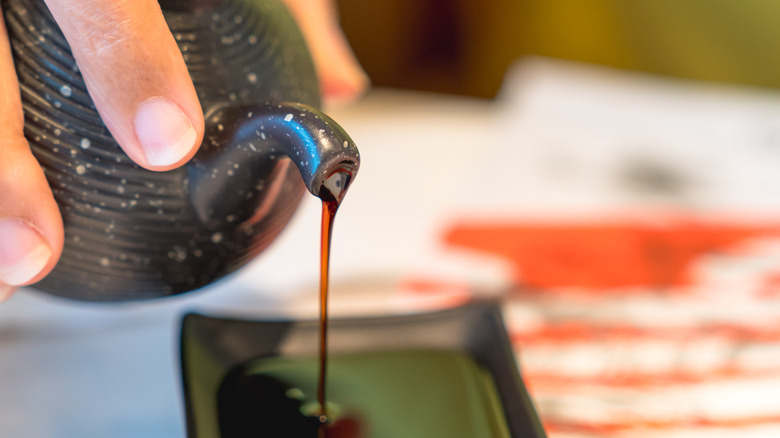Wondering Why Soy Sauce Bottles Have Two Spouts? Here's The Answer
If you've ever been enjoying a meal at a Japanese or Chinese restaurant, reached for the nearly ubiquitous, short, tapered bottle of Kikkoman soy sauce, and either over-poured or made a mess, splashing it on both your food and your hand, you've probably wondered: why does this bottle have two spouts?
The answer is deceptively simple and will probably make you face-palm in frustration if reactions to several viral videos on Instagram and TikTok demonstrating the tool are any indication.
It turns out that second spout is not included in case one gets plugged or to cause spattering frustration, it's to control the speed of the soy sauce pour. According to Southern Living, the second spout is meant for users to place their finger over to control the flow of the sauce.
When the second hole is open it allows more airflow through the container, creating a quick, heavy pour of soy sauce. This is ideal for cooking, but can easily drown your sushi plate. But if a diner places their finger tightly over the spout, the flow becomes restricted and allows as little as one or two drops out at a time, creating the perfect sprinkle with a small shake of the bottle.
An Innovative Design
This design was deeply thought out by the bottle's creator, Kenji Ekuan. The Dieline explains Ekuan needed three years and over 100 prototypes to perfect the dispenser, which was released in 1961. Before the Kikkoman bottle, soy sauce was traditionally sold in large bottles and served in small, ceramic teapot-like containers at the table. Ekuan noted that these containers were hard to get a precise pour from and were opaque, so it was hard to know when they needed to be refilled.
Ekuan set out to improve upon these inherent flaws, including one important new feature in the cap design: the dual spouts are upward facing, so they do not drip on the table after being set down.
Apparently, practice did indeed make perfect, as Kikkoman has sold over 300 million of the iconic bottles world-wide and has not substantially changed the design in 60 years (via Gizmodo). While there is no arguing the bottle's spout is still functionally effective, the longevity of the design may go to prove that sometimes when an invention becomes universal, we may need a reminder every once in a while of how it works.

